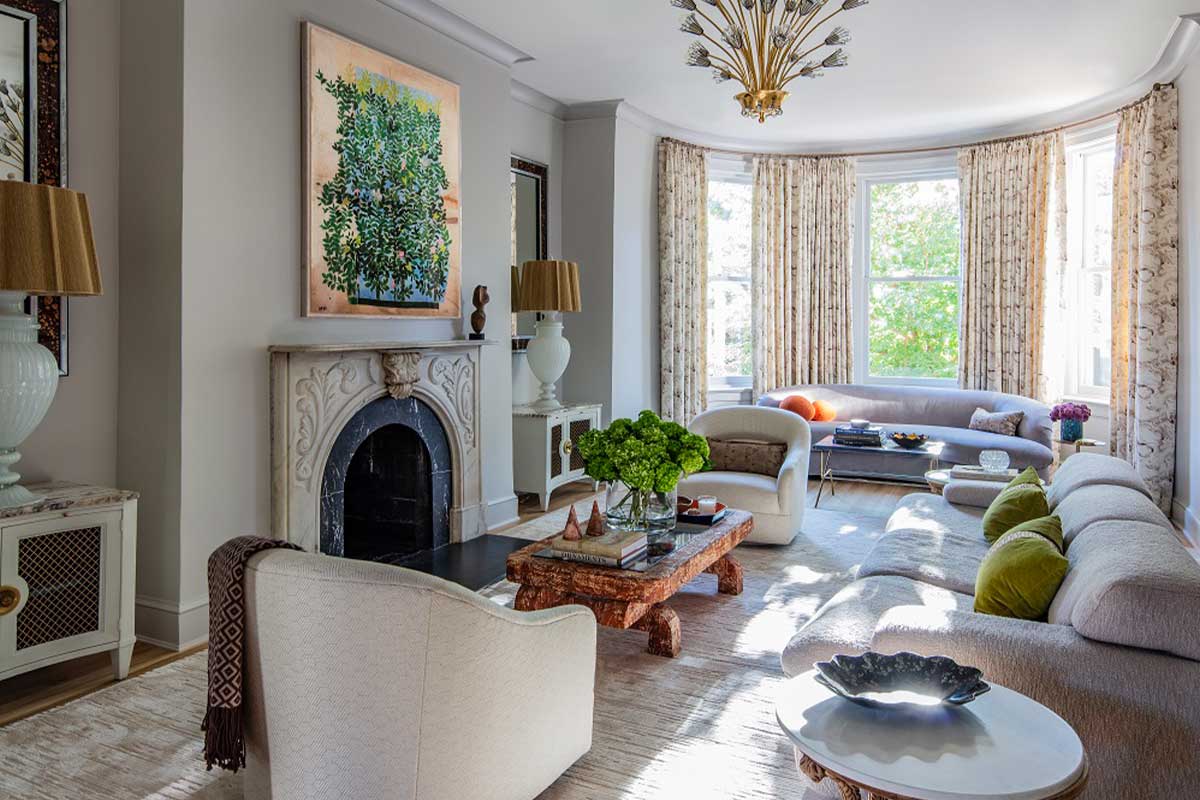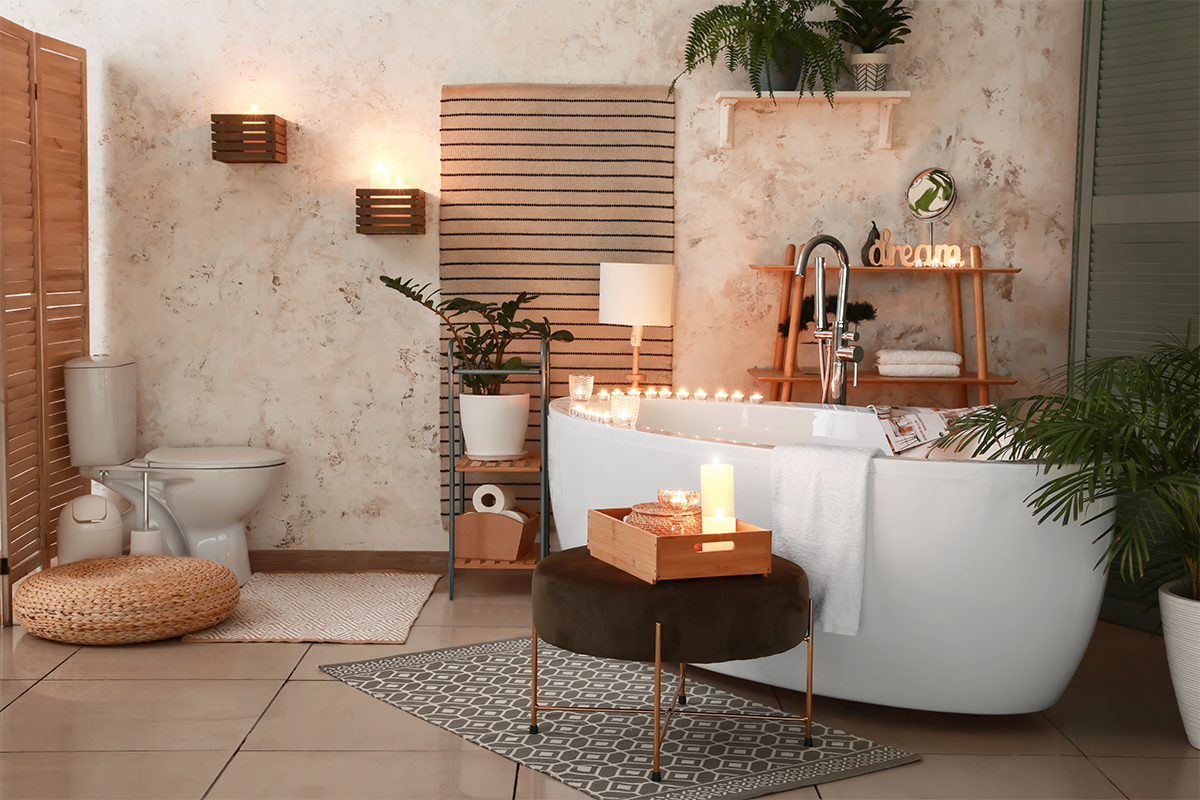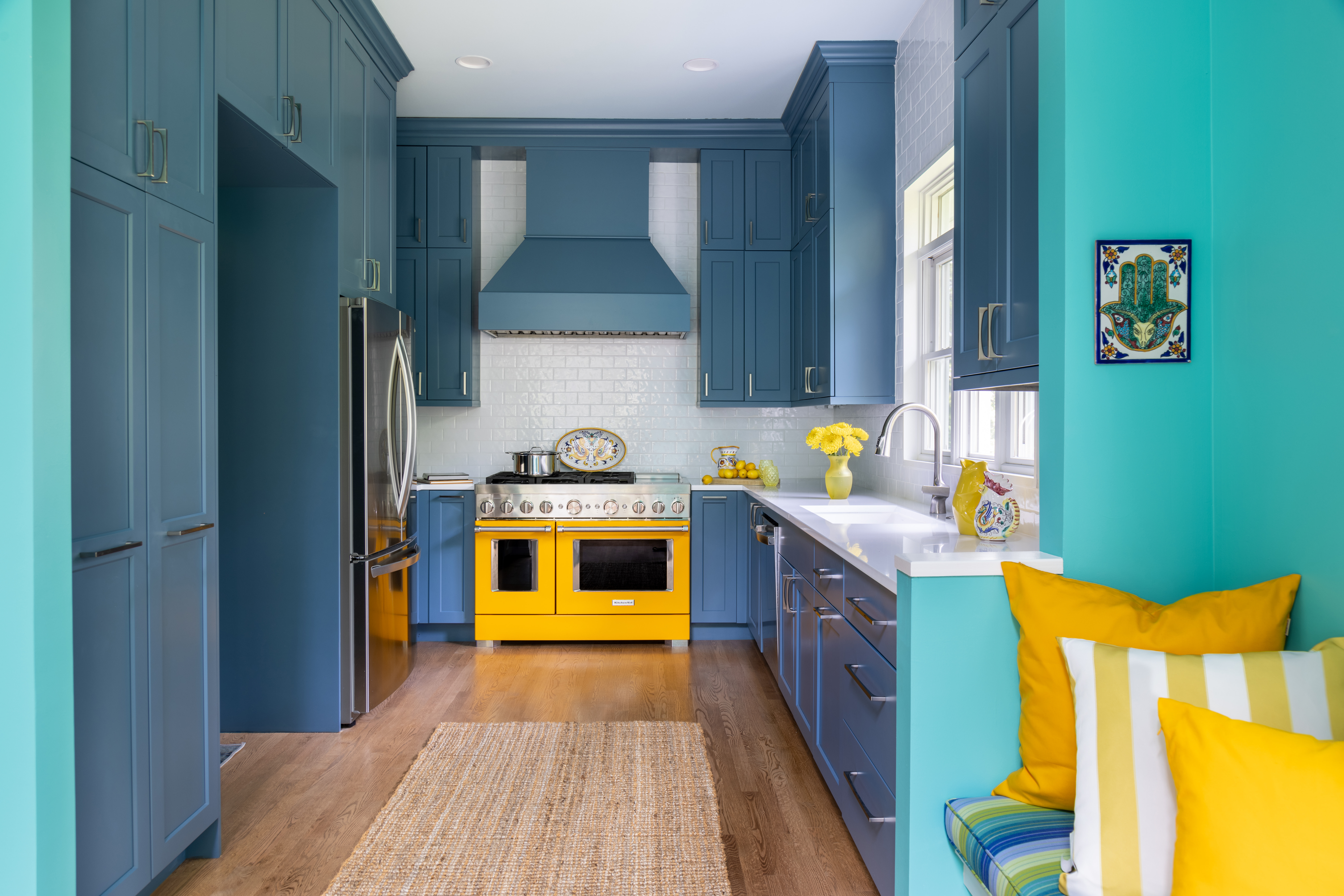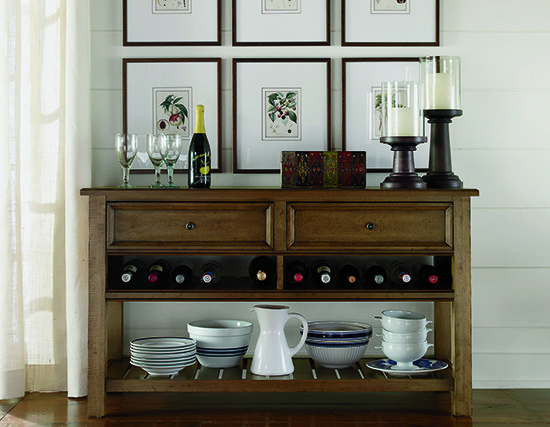
Experts say any home bar should be stocked with the basics: gin, whiskey and vodka. But what’s on the top shelf is ultimately a matter of equal parts personal preference and style.
Interior designer Erika Bonnell says most of her clients are busy professionals who want bar spaces in their homes where they can unwind after a long day at work or provide a warm welcome when guests drop by.
There’s an air of sophistication surrounding an evening tipple. And let’s face it: Bar accessories just look cool. An artfully arranged bar area can transport us to another time, where we can drink in 1950s cocktail culture.
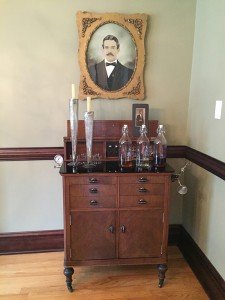
“A well-stocked bar is a sign of a true entertainer,” says Bonnell. A bar adds a “touch of glamour and an extension of genuine hospitality.”
TV shows and social media have fueled a renewed interest in home bars, and bar carts are a big part of that lifestyle, she says. “And it is a more glamorous lifestyle—it’s a little swanky, you know?”
Bonnell recalls a recent project for a gentleman culling from his own collection of liquors, pitchers and glasses. She added a couple of console lamps and hung some black-and-white photographs above to add handsome touches to his inviting spot.
For a lady’s space, she might play up pretty bottles and glasses and add a shot of color with a vase of fresh flowers.
“It can become a focal point,” she says. “Whether you hang a mirror or a collection of art or a nice big piece of art over top of your cart, I think it just enhances it as its own vignette.”
Victoria Vergason, owner of The Hour Shop in Old Town Alexandria, opened her doors just as Mad Men and Downton Abbey burst onto the scene. Her plan was “to sell everything but the booze.” The art of the cocktail was front and center just as TV stars in period costumes were sipping from vintage glassware.
“For me, the whole cocktail experience is not only what you put inside the glass vessel, but it’s what the glass vessel is—how it looks, how it feels,” she says. “There’s a huge difference between drinking out of an etched coupe and drinking out of a red Dixie cup. They’re just completely different experiences.”
Her shop, with its carefully curated pieces of midcentury modern barware, is nestled at the happy intersection of history, pop culture and design.
“It kind of coincided with what I had just started, and it coincided with what was going on in the spirits industry and even the notion of bitters coming back into the marketplace,” Vergason says. “Bitters were an essential part of the cocktail when they were first introduced in the 1800s. Once prohibition hit, bitters kind of went away, and now bitters are back. So to me, it’s interesting—it follows history, and it follows where people’s interests lie.”
Now, some six years later, demand is so high, she can’t keep bar carts in stock.
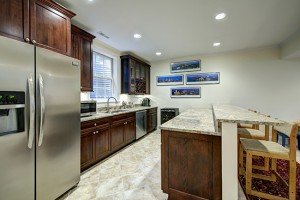
At home, Megan Vogel, a designer for Ethan Allen, pours from a vintage curiosity she picked up at an antiques shop. It’s an old dentist’s cabinet, probably from the 1930s or ’40s, she says, which she rejiggered to suit her tastes. The quirky black glass-topped cabinet, complete with dials, harks back to antiquated dental practices. The handy drawers and doors below allow for hidden storage. When the top is flipped open, it reveals a cubbyhole with cut-outs for old-time elixirs but gets new life as the perfect place for Vogel’s shot glasses. Like a modern bar cart, the piece is on wheels, so she can move it around and give it proper placement when entertaining. Vogel has added another twist on her bar presentation: She prefers a uniform look to her liquor, choosing identical tall carafes.
For a client in Stafford, Vogel parked a bar cart between his living and dining rooms. And although that’s his designated bar area, his bar is mobile.
“Bar carts are a nice, affordable way to pay homage to a bar without worrying about where a big piece of furniture goes,” Vogel says. Whether he’s using it or not, all of his accoutrements stay in plain view, she says, “and it looks cool.” Bar carts come in indoor/outdoor finishes, allowing the party to spill onto the patio or deck.
Designers love bar carts for their versatility. They fit right at home as bedside tables, as uncluttered office filing systems, as spillover kitchen storage. The possibilities really are endless. But also true: bar areas need not be limited to specific pieces. By all means, experts say, employ a secretary to serve up libations; turn a dresser or a console into a drinks spot.
“Some people don’t want to invest in constructing larger bars or purchasing new pieces of furniture,” says Bonnell, who loves to host get-togethers and serve from her sideboard bar. A bar can be anywhere, even on a windowsill, she says. The place to pour can be playful, not serious. It’s about having a designated space to house and display liquors.
While today’s bar cabinets can look sleek and stylish, with racks to hang glasses and shelves to stash booze and accessories, any piece of furniture that suits your style can be transformed into a bar area.
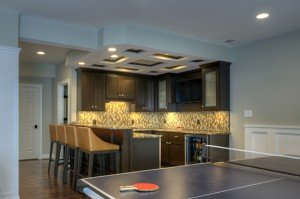
Vergason’s own home setup consists of an 18th-century butler’s desk with drawers below and a top shelf that folds down. She uses an adjacent bar cart to showcase interesting spirits and glasses.
“My bar is not only using a practical piece of furniture that I found and liked as a bar, but it’s also using a bar cart as a bar. But you could really make a bar out of just about anything.”
In her shop, Vergason stocks glamorous ladies’ dressing tables complete with a mirror in the center and a drawer underneath. “Anything with a mirror makes a great bar,” she says.
Her tip? Trust your aesthetic. “Use a functional piece of furniture that you really like and you think is pretty, and it will look beautiful.”
There is no science to it. Even though for Javier Candon, co-owner of SER in Ballston, his home bar often acts as a liquor laboratory where he experiments with cocktail concoctions and infusions, and when he’s pleased with the results, they hit the menu. He flavors his own gin using Spanish Orujo, adding juniper berries, orange peel and rosemary. He also makes his own bitters, creating tinctures of cayenne and black pepper and lime zest.
But for those looking to entertain on a grander scale, dedicated wet bars, as space allows, might just be the tonic. Moss Building & Design renovates and remodels decades-old, out-of-date wet bars, tailoring them to specific uses. There is a recipe for making it work. For a finished basement wet bar and theater space, co-owner Jason Hampel asks: How can you get the most use out of the space? For example, splurge on the entertainment and scale back on cabinet costs. Go for the wall-sized TV; opt out of a downstairs dishwasher.
Stick with the basics, but look for good quality and good value, he says. “I always encourage people to consider getting a dedicated ice maker, a fridge that is sizeable enough to fit enough drinks—it doesn’t have to be a full-size fridge—and a nice sink and faucet.”
These hangouts have evolved from outdated bars to becoming family-centric zones. From providing entertainment to serving long-term guests, the idea is to get as much use and enjoyment out of the space as possible.
And from spacious digs to small, sophisticated bars, if they make a statement, so much the better.
We’ll drink to that.
(May 2016)


